Uncategorized
Jared Griffiths Provides Rock Solid Expertise to Drillers
THOMPSON, CONNECTICUT USA, December 11, 2015– Numa, the leading designer and manufacturer of down hole hammers and bits, has announced the addition of Jared Griffiths as a Field Technician. The addition of Griffiths further expands the field support team that has been synonymous with Numa for the past 30 years.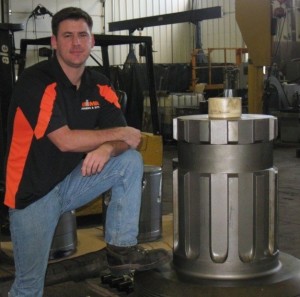
“Numa continues to support our customers both in engineering of superior products and on the job site technical support,” said Numa President Ralph Leonard. “The relationship with our customers is paramount to our success and we are committed to providing expertise in the field where it is needed most. Jared’s addition further reinforces Numa’s dedication to being a trusted partner with our customers on the job site and beyond.”
In this role, Griffiths will support Numa customers on hammer start-ups and on-going technical support. He will advise drillers on best practices for using Numa products including critical insights on drill prep, assembly, air pressure, weight on bit, rotation speed, and drilling techniques to optimize performance. His role also includes consulting and test engineering to determine the most appropriate hammer and bits for ground conditions being encountered on jobs.
Griffiths has worked his way up through Numa’s manufacturing and field operations teams, holding a wide range of roles that has given him an unparalleled depth of understanding of DTH products. In addition to providing field support, Griffiths has previously held positions where he manufactured hammer and bit parts in addition to roles where he was responsible for assembly and repairs. All of Griffiths’ experience provides drillers a critical resource with in-depth knowledge into how Numa products are built, how they operate, and how customers can best maximize performance.
ABOUT NUMA
Numa is the global leader in the design and manufacturing of down hole hammers and bits for drilling vertical, horizontal, and reverse circulation holes from 3½ to 48 inches (89 – 1,219 mm) in diameter. Numa’s products are used in over 105 countries drilling in a wide range of industries including Construction, Foundation, Micro Piling, Oil & Gas, Quarry, Mining, Utility, Geothermal, Environmental, Horizontal, and Water Well.
Foremost to the success of our customers is Numa’s personal service and technological expertise. Numa is dedicated to supporting customers on the job site and is constantly talking to drillers around the world to get first hand input about the products required for today’s demanding drilling environment. Being so close to drillers’ needs has allowed Numa to develop 13 patents for ground breaking drilling technology and produce over 100 different DTH hammer and bit models in a state-of-the-art manufacturing facility.
For more information visit: www.numahammers.com
Uncategorized
Release Date: 12/22/2015
Contact Information: Margot Perez-Sullivan, 415-947-4149, PerezSullivan.Margot@epa.gov
SAN FRANCISCO –The U.S. Environmental Protection Agency announced more than $19 million in funding to Nevada for investments in statewide improvement in local drinking water and wastewater infrastructure and the reduction of water pollution. Nevada’s Clean Water State Revolving Fund (SRF) provides financing for municipal wastewater treatment projects, while the state’s Drinking Water SRF provides financial assistance for drinking water infrastructure improvements.
“This substantial investment at the federal level helps communities develop the infrastructure needed for clean, safe drinking water and proper wastewater treatment,” said Jared Blumenfeld, EPA’s Regional Administrator for the Pacific Southwest. “EPA is committed to protecting the water resources so important to public health and Nevada’s economy.”
Funds provided by the state will go to a variety of water quality infrastructure improvement projects throughout Nevada. Clean Water SRF money goes to projects that benefit public health and the environment, such as converting septic systems to sewer, and that increase reliability and sustainability of wastewater through upgrades and renovations to treatment facilities and sewer lines. Drinking Water SRF money is used to address health risks and improve community and public water systems by supporting projects like groundwater and surface water treatment systems, water storage, transmission and distribution systems, and water metering. For example, the Baker General Improvement District expects to receive over $475,000 to replace a failing water tank with a new 265,000-gallon welded steel tank, which will save thousands of gallons of treated water each year and substantially reduce treatment costs.
Previous Nevada SRF funds have provided $30 million to Clark County Water Reclamation District to upgrade to a more conventional tertiary treatment system. The money has gone to ongoing replacement of old treatment filters, installing additional filters and ultraviolet (UV) disinfection systems. These upgrades increase treatment capacity for used water and sewage and reduce capital and operational costs.
EPA has awarded a combined $205.3 million in federal funding for Nevada’s Clean Water and Drinking Water State Revolving Fund programs since their inception in 1988 and 1996. The funds are used for a wide variety of water quality projects including watershed protection and restoration, water and energy efficiency, wastewater reclamation, and traditional municipal wastewater treatment systems including nonpoint source pollution control. The funds also support drinking water infrastructure, as well as drinking water plant operator training, and technical assistance.
The EPA’s Pacific Southwest Region administers and enforces federal environmental laws in Arizona, California, Hawaii, Nevada, the Pacific Islands and 148 tribal nations—home to more than 48 million people.
For more information on EPA Region 9’s State Revolving Fund program, visit: http://www.epa.gov/region9/water/grants/srf-loan-prog.html
Uncategorized
Release Date: 12/22/2015
Contact Information: Margot Perez-Sullivan, 415-947-4149, PerezSullivan.Margot@epa.gov
SAN FRANCISCO –The U.S. Environmental Protection Agency announced more than $19 million in funding to Nevada for investments in statewide improvement in local drinking water and wastewater infrastructure and the reduction of water pollution. Nevada’s Clean Water State Revolving Fund (SRF) provides financing for municipal wastewater treatment projects, while the state’s Drinking Water SRF provides financial assistance for drinking water infrastructure improvements.
“This substantial investment at the federal level helps communities develop the infrastructure needed for clean, safe drinking water and proper wastewater treatment,” said Jared Blumenfeld, EPA’s Regional Administrator for the Pacific Southwest. “EPA is committed to protecting the water resources so important to public health and Nevada’s economy.”
Funds provided by the state will go to a variety of water quality infrastructure improvement projects throughout Nevada. Clean Water SRF money goes to projects that benefit public health and the environment, such as converting septic systems to sewer, and that increase reliability and sustainability of wastewater through upgrades and renovations to treatment facilities and sewer lines. Drinking Water SRF money is used to address health risks and improve community and public water systems by supporting projects like groundwater and surface water treatment systems, water storage, transmission and distribution systems, and water metering. For example, the Baker General Improvement District expects to receive over $475,000 to replace a failing water tank with a new 265,000-gallon welded steel tank, which will save thousands of gallons of treated water each year and substantially reduce treatment costs.
Previous Nevada SRF funds have provided $30 million to Clark County Water Reclamation District to upgrade to a more conventional tertiary treatment system. The money has gone to ongoing replacement of old treatment filters, installing additional filters and ultraviolet (UV) disinfection systems. These upgrades increase treatment capacity for used water and sewage and reduce capital and operational costs.
EPA has awarded a combined $205.3 million in federal funding for Nevada’s Clean Water and Drinking Water State Revolving Fund programs since their inception in 1988 and 1996. The funds are used for a wide variety of water quality projects including watershed protection and restoration, water and energy efficiency, wastewater reclamation, and traditional municipal wastewater treatment systems including nonpoint source pollution control. The funds also support drinking water infrastructure, as well as drinking water plant operator training, and technical assistance.
The EPA’s Pacific Southwest Region administers and enforces federal environmental laws in Arizona, California, Hawaii, Nevada, the Pacific Islands and 148 tribal nations—home to more than 48 million people.
For more information on EPA Region 9’s State Revolving Fund program, visit: http://www.epa.gov/region9/water/grants/srf-loan-prog.html
Uncategorized
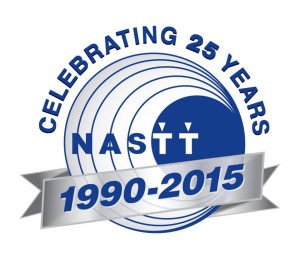 NASTT turns 25 in 2015! What was happening 25 years ago?
NASTT turns 25 in 2015! What was happening 25 years ago?
On Christmas Day, 1990, “The Godfather Part III” directed by Francis Ford Coppola and starring Al Pacino, Diane Keaton and Andy Garcia premiered.
Also on Christmas Day, 1990, the first successful trial run of the system which would become the World Wide Web occurred.
And on December 31, 1990, the Sci-Fi Channel on cable TV began transmitting.
And that’s a wrap! We had a great time looking back at the last 25 years this year. We hope you enjoyed it too!
Uncategorized
Release Date: 12/17/2015
Contact Information: Joe Hubbard or Jennah Durant at 214-665-2200 or r6press@epa.gov
DALLAS – (Dec. 16, 2015) The U.S. Environmental Protection Agency (EPA) approved revisions to the Pueblo of Pojoaque’s water quality standards. The Clean Water Act revisions included revised aquatic life criteria and updates to technical references. The Pueblo, located in New Mexico, protects public health and aquatic life for the area that includes the Rio Pojoaque, Rio Tesuque, and Rio Nambe water bodies.
“The Pueblo of Pojoaque is preserving ecosystems that are essential to tribal lands,” said EPA Regional Administrator Ron Curry. “The Pueblo’s leadership will strengthen its ability to restore and maintain its water resources.”
Under the Clean Water Act, a tribe must be federally recognized, have a governing body, jurisdiction and capability in order to administer a water quality standards program. In 1996, EPA approved the Pueblo’s application to administer the water standards program and approved the water quality standards. In Sept. 2015, the Pueblo held a public hearing on its proposed revisions to the standards and notified neighboring tribes, state agencies, federal agencies and local authorities of the opportunity to comment on the proposed standards.
The goal of the Clean Water Act includes restoring and protecting the chemical, physical and biological integrity of the nation’s waters. Water quality standards established under the Clean Water Act set the tribe’s expectations for reservation water quality. These standards also serve as water quality goals for individual surface waters, guide and inform monitoring and assessment activities, and provide a legal basis for permitting and regulatory pollution controls.
For information on federally approved water quality standards adopted by Indian tribes and states, please visit: http://www.epa.gov/wqs-tech
On November 8, 1984, the EPA issued its Policy for the Administration of Environmental Programs on Indian Reservations. In doing so, the EPA became the first federal agency to adopt a formal Indian policy to guide its relations with tribal governments in the administration of its programs.
Connect with EPA Region 6:
On Facebook: https://www.facebook.com/eparegion6
On Twitter: https://twitter.com/EPAregion6
Activities in EPA Region 6: http://www2.epa.gov/aboutepa/epa-region-6-south-central
Uncategorized
PERRY, Okla., Dec. 15, 2015 – The Ditch Witch family is deeply saddened to announce the passing of the company’s founder and industry icon Ed Malzahn on 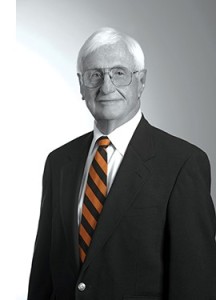 Friday. He was 94.
Friday. He was 94.
Malzahn changed the way the world’s utility infrastructure is installed and maintained when he launched the first service line trencher, the Ditch Witch model DWP in 1949 from a small machine shop in Oklahoma. That small shop grew to become Ditch Witch, a Charles Machine Works company, which today employs more than 1,500 workers, and has more than 175 dealerships and branches serving 195 countries. The company has produced and sold more than half of the world’s trenching machines.
“Ed was the inspirational leader of the Ditch Witch and Charles Machine Works family for over 65 years,” said Rick Johnson, chief executive officer for Charles Machine Works. “He possessed a sharp mind, strong rural work ethic and generous spirit – all of which he used to better those around him.”
Recognition of Malzahn’s accomplishments as an industry leader and innovator included his induction into the Oklahoma Inventors Hall of Fame, American Rental Association Hall of Fame, Construction Equipment Hall of Fame and North American Society for Trenchless Technology Hall of Fame. He also was named Inventor of the Year by the Oklahoma Bar Association: Patent, Trademark and Copyright Section.
The needs of the community and its residents were always a priority to Malzahn, who held deep Oklahoma roots. His efforts as a civic leader and philanthropist included volunteer service and financial contributions to numerous organizations and boards at the local, state and national level.
As a family man, Malzahn’s family life extended to his work life. Charles Machine Works has remained a family business since its creation, even after global success. Malzahn’s granddaughter Tiffany Sewell-Howard, who represents the fifth-generation of the Malzahn family, now serves as the executive chair of Charles Machine Works.
Malzahn is survived by his three children, nine grandchildren and 13 great-grandchildren.
To send condolences or share memories, please visit EdMalzahn.com.
Memorial and funeral arrangements are scheduled as follows:
Memorial:
Friday, December 18, 2015:
6:00 – 8:00 p.m.
Ditch Witch Training Center
1947 West Fir Avenue
Perry, Okla. 73077
Funeral Services:
Saturday, December 19
2:00 p.m.
First Presbyterian Church
1922 N. 15th Street
Perry, Okla. 73077
In lieu of flowers, donations may be made to the Perry Memorial Hospital Foundation, c/o Brown-Dugger Funeral Home at 1010 North 7th Street in Perry, Oklahoma.
To read more about Ed’s induction into NASTT’s Hall of Fame, click here.
Uncategorized
Contributed by Vermeer
Efficiency is more than drilling fast
“Efficiency” is a word that gets used a lot in the horizontal directional drilling world.
However, if your sole focus is on improving efficiency while drilling, you’re already operating inefficiently.
That’s because inefficient use of time during setup and cleanup, mud mixing and potholing cuts into margins the same way that as a prolonged bore does.
“The more efficient you are on a jobsite, the more opportunities you’re going to have to help reduce costs, whether it’s machine costs like fuel or maintenance, or manpower expenses,” says Lee Schroeder, applications specialist for the Underground segment at Vermeer.
With that in mind, he offers some tips on how to assist in improving jobsite efficiency.
SETUP
Jobsite setup is going to depend on many factors, including the location and the project. Are you using a smaller drill or a maxi rig? Is it an urban or a rural setting? Are you operating near traffic? Regardless, have a plan before you arrive.
“No two jobsites are going to be the same,” Schroeder says. “It all ties around the project location and the type of product they’re installing.”
BE PREPARED
The drilling in horizontal directional drilling gets a lot of attention, and for good reason. But Schroeder has seen a lack of preparedness related to overall planning of the job, including mud mixing and exposing utilities.
Have the proper mud mixed for the soil conditions at that jobsite and ready to go for when it’s time to drill. Same thing for exposing utilities. Get the local One Call service to come to the jobsite a few days before the drilling is to begin so your crew can have time to expose the utilities. Many contractors are turning to reclaimers to minimize delays in disposing of drilling spoils. Also, have your crew prepare all tooling (for example, reamers, swivels, bits and product) during the pilot bore so it is ready to use as soon as the pilot bore is complete.
“Probably the biggest factor in maximizing jobsite efficiency is communication,” Schroeder says. “If a crew member knows what needs to be done and can anticipate what will happen next, they’ll be more proficient on a jobsite.”
CLEANUP
Everyone wants to wrap up the current job and move on to the next one, but it’s important to plan for the cleanup of the jobsite by making sure everyone has a defined role in tearing down the jobsite and performing any necessary rehab work.
EFFICIENCY PAYS
At a time when margins and deadlines are getting tighter, running a more efficient operation from start to finish may help a company achieve project goals. It also can benefit crew members who get bonuses for reaching certain footage goals.
To read more articles like this, visit the Vermeer Navigator Nation blog, an educational site for HDD operators.
Uncategorized
Release Date: 12/09/2015
Contact Information: John Martin, (212) 637-3662, martin.johnj@epa.gov
(New York, N.Y.) The U.S. Environmental Protection Agency has awarded $690,940 to the Saint Regis Mohawk Tribe, the New York City Department of Parks and Recreation, and the Research Foundation of SUNY, to better protect wetlands throughout New York.
“Wetlands play a critical role in alleviating harmful effects of climate change, protecting against flooding and storm surges,” said EPA Regional Administrator Judith A. Enck. “These grants will help strengthen shorelines and the health of wetlands, protecting water quality and fish and wildlife habitats.”
The Saint Regis Mohawk Tribe will use a $212,156 grant to develop water quality criteria for wetlands throughout its jurisdiction. Water quality standards define the goals of water bodies by designating how specific water bodies are used (for fishing, swimming, boating, etc.), setting environmental criteria to protect those uses, and establishing provisions to protect water quality from pollutants. To meet EPA approval, state and tribal water quality standards must include definition of designated uses, water quality criteria, anti-degradation requirements and general policies in their water quality standards.
With a $155,337 grant, the New York City Department of Parks and Recreation will analyze wetlands and stream networks and categorize them by their susceptibility to the impacts of storm water. NYC Parks will also identify factors that lead to wetland vulnerability and prepare guidelines for storm water management that will best protect downstream wetlands. NYC Parks is responsible for managing almost half of New York City’s freshwater wetlands. The New York City Department of Parks and Recreation will contribute $52,000 towards the total cost of this project.
The Research Foundation of SUNY at the State University of New York College of Environmental Science and Forestry will use a $323,447 EPA grant to develop criteria to determine if vernal pools are of “unusual local importance.” Vernal pools are small, temporary bodies of water that are typically found in forests. The Research Foundation of SUNY will work in partnership with the New York Natural Heritage Program on this project and will contribute $133,032 towards the total cost of this project.
Since 1990, EPA’s Wetland Program Development Grants have provided financial assistance to help build or refine state and local government wetland programs. These funds provide opportunities for states to conduct research and help build the science behind comprehensive wetlands programs at the state level.
For more information on the EPA’s Wetland Program Development Grants, visit: http://www2.epa.gov/wetlands/funding-and-other-resources
Follow EPA Region 2 on Twitter at http://twitter.com/eparegion2 and Facebook at http://facebook.com/eparegion2
Uncategorized
Ottawa, IL, November 30, 2015 – Recent rulings of the Patent Trial and Appeal Board (PTAB)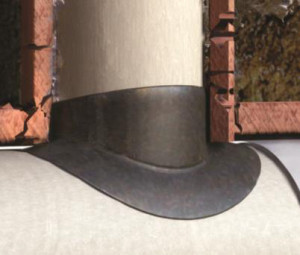 of the United States Patent and Trademark Office have no impact on the continued validity of the fundamental patent claims surrounding LMK’s commercial embodiments for the Insignia Seal™. LMK, in fact, prevailed on petitions filed by BLD on patent claims surrounding LMK’s commercial embodiments for the Insignia Seal™. Specifically, claims covering the Hydro Hat™ remain 100% intact and valid following BLD’s multiple unsuccessful challenges to LMK’s patent claims. The PTAB also determined that some of the claims of U.S. Patents 7,975,726; 8,667,991; and 8,667,992 were unpatentable. However, those patent claims are not focused on the Hydro Hat™ sealing gasket, but primarily describe materials and methods that are not practiced by LMK. LMK remains committed to the Hydro Hat™ gasket because of its superior performance. Importantly, patent claims covering LMK’s Hydro Hat™ are still considered valid and enforceable, and the technology is very valuable to utility owners and their rate payers.
of the United States Patent and Trademark Office have no impact on the continued validity of the fundamental patent claims surrounding LMK’s commercial embodiments for the Insignia Seal™. LMK, in fact, prevailed on petitions filed by BLD on patent claims surrounding LMK’s commercial embodiments for the Insignia Seal™. Specifically, claims covering the Hydro Hat™ remain 100% intact and valid following BLD’s multiple unsuccessful challenges to LMK’s patent claims. The PTAB also determined that some of the claims of U.S. Patents 7,975,726; 8,667,991; and 8,667,992 were unpatentable. However, those patent claims are not focused on the Hydro Hat™ sealing gasket, but primarily describe materials and methods that are not practiced by LMK. LMK remains committed to the Hydro Hat™ gasket because of its superior performance. Importantly, patent claims covering LMK’s Hydro Hat™ are still considered valid and enforceable, and the technology is very valuable to utility owners and their rate payers.
As a result of the PTAB’s decisions, nothing changes for LMK’s patented cured in-place pipe processes, and BLD cannot practice the use of the Hydro Hat™ sealing gasket without infringing LMK’s patent rights. The materials supplied by LMK and installed by licensed LMK contractors are the same high quality products today as they have been for many years. The Insignia Gasket Sealing System remains the most advanced long-term watertight CIPP sealing solution available in the market today.
LMK’s patented Hydro Hat™ gasket is specifically designed and engineered for sealing the unique shape of the juncture between two pipes and provides a positive compression seal. The molded Hydro Hat™ gasket consists of a 3″ brim seated against the mainline pipe and extends up into the lateral pipe forming the ultimate seal at the weakest and most critical location in a collection system. Gasket Sealing Technology raises the bar for the trenchless industry by providing a gasket seal for rehabilitated pipes just like that of a gasket found in new pipes, making CIPP a true trenchless watertight alternative to new pipe.
LMK Technologies has been the innovation leader in the pipeline rehabilitation industry since 1993 and has over 125 worldwide patents. LMK’s President and Founder, Larry Kiest, is thankful that the PTAB proceedings did nothing to alter the most important aspects of LMK’s patent rights — patent claims directed to the Hydro Hat™ gasket. “Our Insignia™ gasket sealing technology with compression gaskets located at service connections and manhole connections provide a total sealed system and making CIPP a true trenchless watertight alternative to new pipe is a big win for the industry.”
“Our mission has never wavered,” Kiest added. “Through innovation and adherence to industry standards, we provide the nation’s sewer utilities and their rate payers with the highest-value, most cost effective long-term trenchless solutions.”
The decision by the PTAB is not a final ruling, and the patent infringement lawsuit filed by LMK against BLD Services is still pending in the Federal District Court for the Northern District of Illinois.
LMK is the leading trenchless technology provider, as well as a manufacturer of liner materials and equipment, for the pipeline rehabilitation industry. LMK serves the municipal and residential market through a large network of licensed and factory trained contractors and installers. For more information regarding LMK’s Insignia™ Gasket Sealing Products, T-Liner® Main-to-Lateral Lining System, Performance Liner® Lateral Lining systems or to obtain a listing of the independent municipal contractors who install the T-Liner lining system visit www.lmktechnologies.com, call 1-815-433-1275 or email info@lmktechnologies.com.
Uncategorized
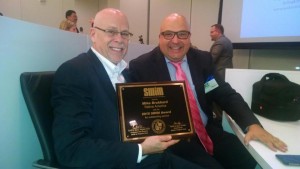
Congratulations to Mike Burkhard of Reline America, who received the Virginia Tech 2015 SWIM Award (Sustainable Water Infrastructure Management Award) during the 2015 Water Asset Management Conference in Arlington, VA on 12/2-12/3/15.
Picture: Mike Burkhard, Executive Director of Business & Technology Development, Reline America; Roland Waniek, Managing Director, IKT





